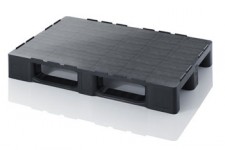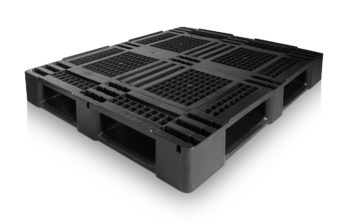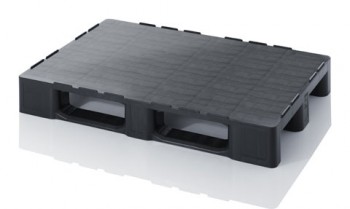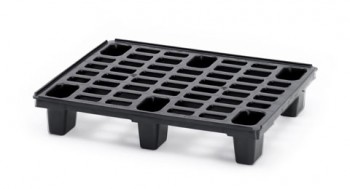The various types of plastic pallets
13 Mar 2014

Pallets come in a range of different styles and sizes, depending on the customer’s requirements. Plastic models can be classified as Euro pallets, non-standard pallets, or standard pallets.
Pallets manufactured from plastic offer several advantages over those produced from wood. They are resistant to water, insect infestations, and mould and don’t require treatment. Plastic models are durable and can be reused. They are also easy to clean, making them suitable for more hygienic requirements, including the food and pharmaceutical industries. Plastic pallets can be made from recycled components and can also be recycled themselves when no longer needed.

Euro pallets
The Euro pallet is the standard-size pallet used for transporting goods across Europe. Many companies will also look for businesses outside of the Continent to use them when importing goods. This makes it considerably quicker and easier for the importing company, as there is no need to repack goods onto Euro pallets when they arrive. A Euro pallet is also easier to transport and move around a warehouse using standard equipment. This reduces the cost of transporting the goods and increases the productivity levels.
Euro pallets can be reused and are manufactured to a high quality, making them extremely durable. They are available in four different sizes: EUR/EUR1: 800 x 1200mm; EUR2: 1200 x 1000mm; EUR3: 1000 x 1200mm; EUR6: 800 x 600mm.

Standard Pallets
A standard plastic pallet measures 1200mm x 1000mm. Depending on the customer’s requirements, they are available in a range of different specifications and designs. They can be produced as a budget option that is more lightweight, or alternatively, there are heavy-duty and reinforced models for heavier loads stored in high rack locations. Lightweight models are designed to be stacked on top of each other, which saves space when they’re not in use.
Standard plastic pallets can be specifically designed for use in hygienic environments. This makes them suitable for the food and pharmaceutical industries, where hygiene levels are extremely strict. Standard pallets can also be used for transporting goods globally when the restrictions of the Euro pallet are not required.

Non-Standard Pallets
We have non-standard pallets for customers who require pallets of different sizes, which are produced to a range of specifications. These offer the same advantages as a standard pallet but without the restrictions of set dimensions. This makes them more suitable for companies that have smaller storage requirements. Rather than having a great deal of empty space on a pallet, a smaller model can be used. They are also beneficial for companies that have a lack of storage space, as the pallet can be more closely matched to the area available, enabling it to fit into the space.
Pallets that are made from plastic can be used in many of the same ways that wood pallets are utilised. However, they offer more benefits and don’t have the same disadvantages, making them suitable for a wider range of markets.
Buy Plastic Pallets Today
Purchase plastic pallets of all sizes and types from Plastic Pallets UK today, and get next-day delivery on orders placed before noon. For bespoke orders, use our free online quoting engine, or contact our team via our online form or by calling the freephone on 03301757766.
